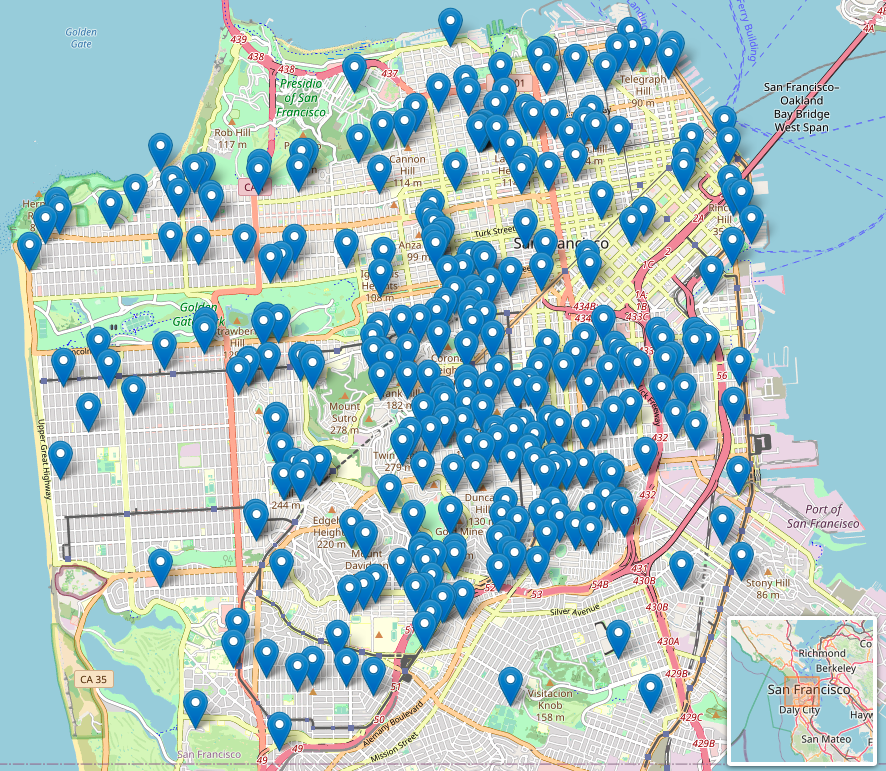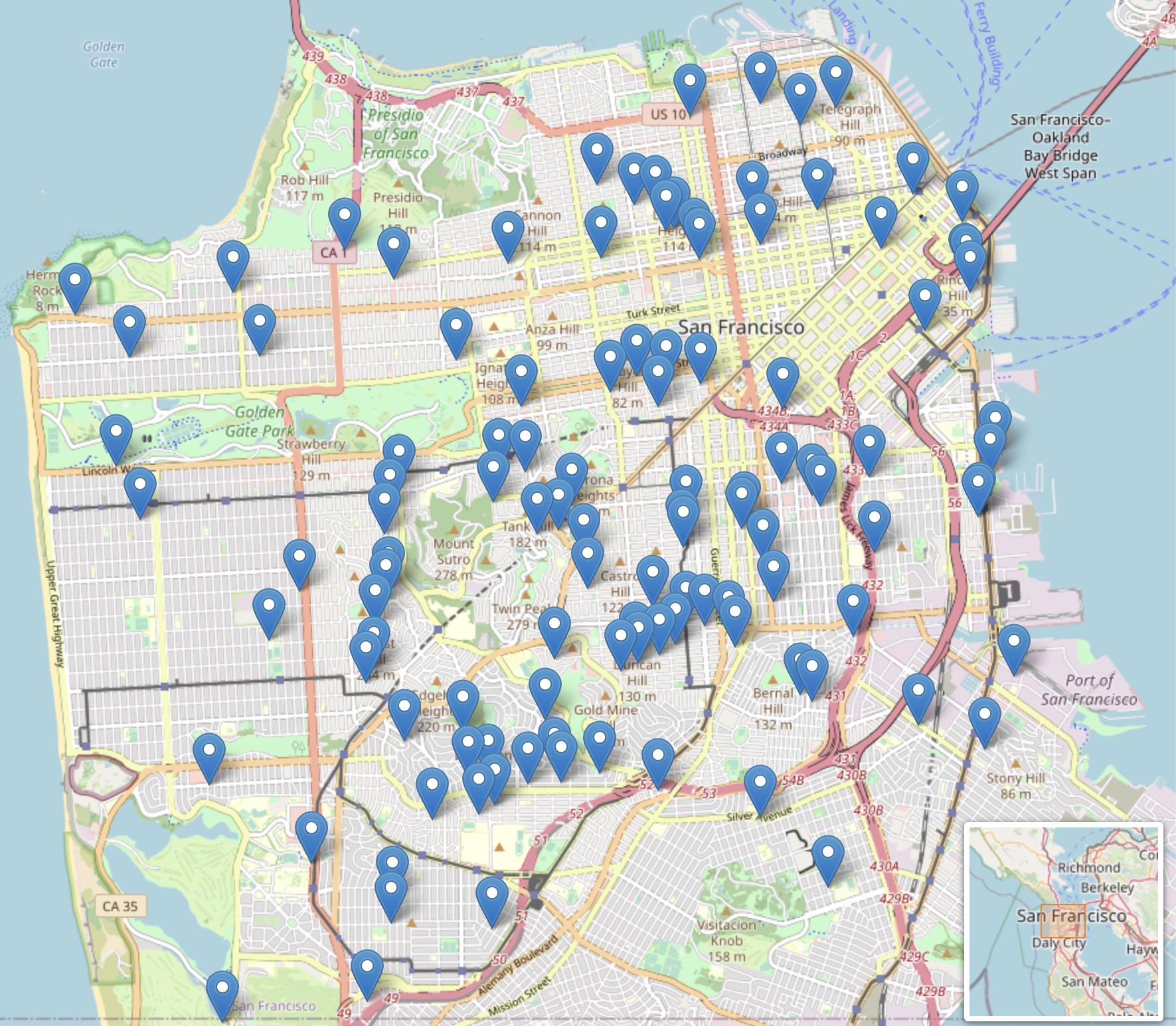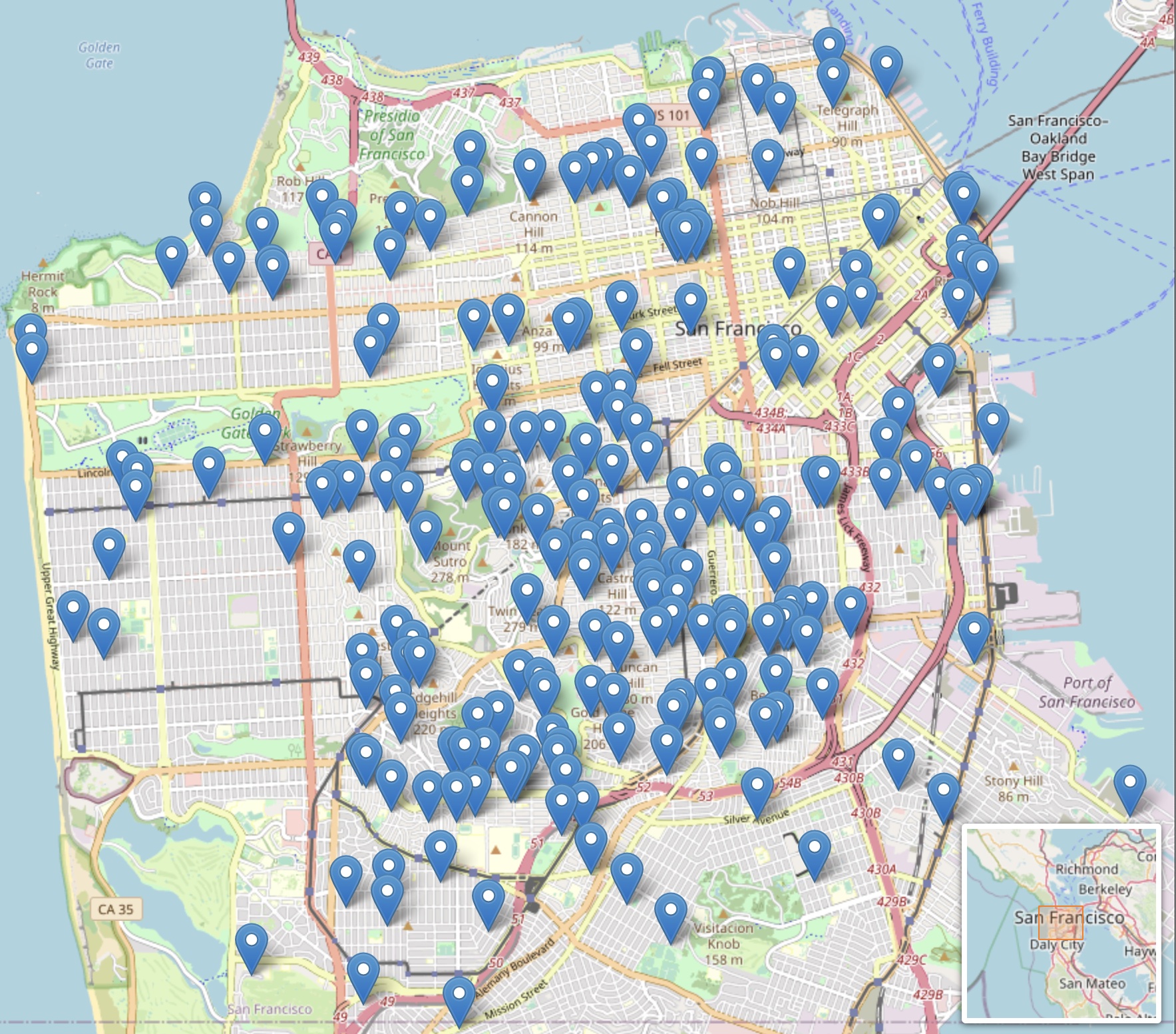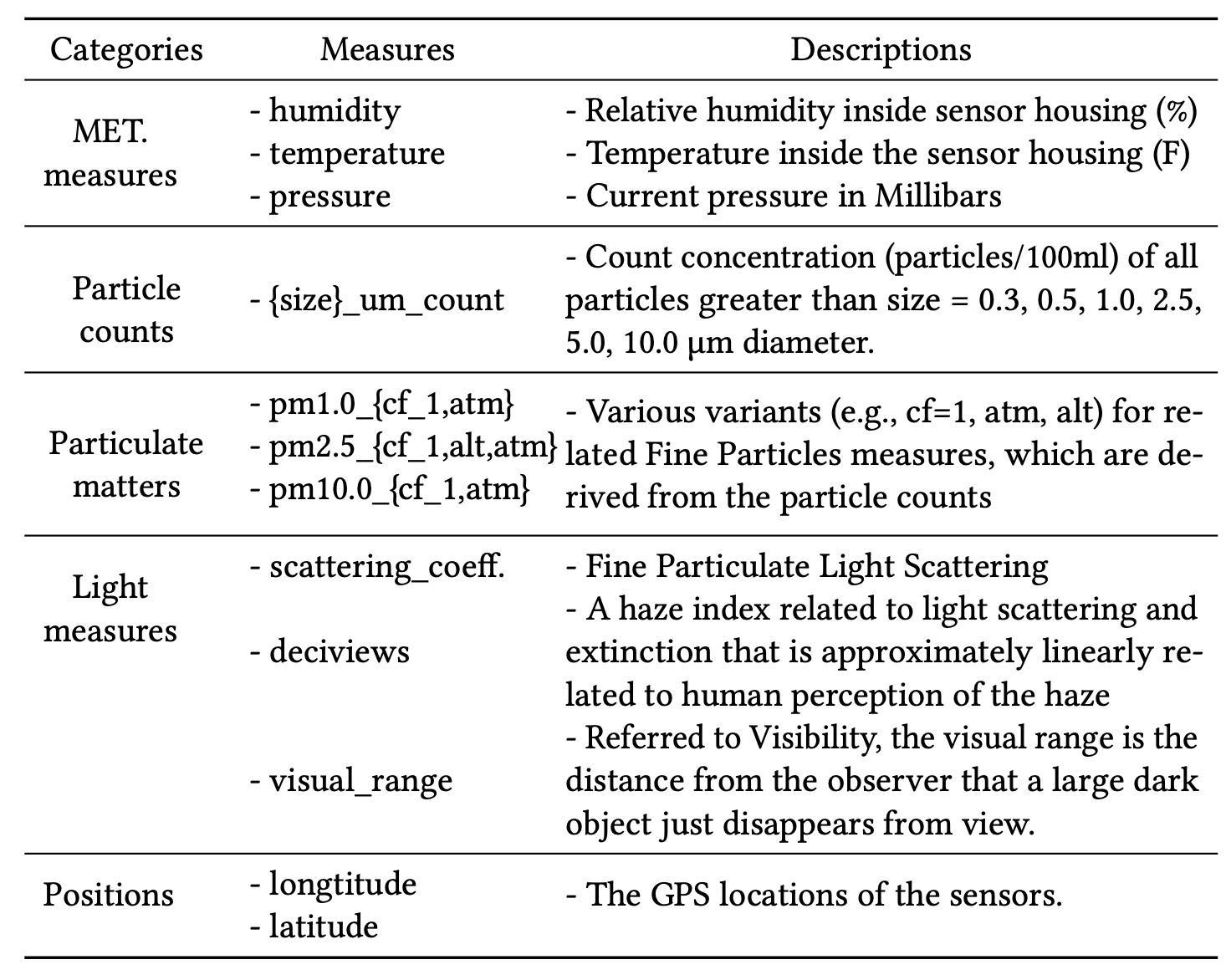This is the companion repository for the PurpleAirSF Dataset. The paper can be found here.
The preprocessed datasets can be downloaded in Google Drive.
- PurpleAirSF-10M: 10-minute sampling frequency/granularity
- PurpleAirSF-1H: one-hour sampling frequency/granularity
- PurpleAirSF-6H: six-hour sampling frequency/granularity
In each archived file, we provide
- IDS.json: JSON file including the IDs of the sensor stations
- sensor-loc.csv: GPS locations (longitude, latitude) of each sensor station
- map.html: Sensor stations visualized in a Map
- data.npy: Preprocessed meteorological and air quality measures
The preprocessed data has a shape of (N, L, F)
- N: the number of sensor stations
- L: the entire sequence length
- F: the number of features/measures in each station.
Users are free to split the dataset with different window size.
Here are a list of ordered measures that we considered during data collection:
'humidity', 'temperature', 'pressure',
'pm2.5_alt', 'scattering_coefficient', 'deciviews', 'visual_range',
'0.3_um_count', '0.5_um_count', '1.0_um_count', '2.5_um_count',
'5.0_um_count', '10.0_um_count', 'pm1.0_cf_1', 'pm1.0_atm', 'pm2.5_atm',
'pm2.5_cf_1', 'pm10.0_atm', 'pm10.0_cf_1'
The detailed descriptions of the measures are shown in the below table:
Users can also use our provided scripts to fetch raw data from PurpleAir via PurpleAir API.
For some feature you need the private keys for the APIs.
-
Create an PurpleAir account
-
Write a email to contact@purpleair.com with subject "API keys for PurpleAirAPI". They will send you your API private key. Once you have it, just create a file in
keys/PurpleAir_API_key.confwith the following structure:
[purpleair.com]
API_readKey = YOUR-PRIVATE-READ-KEY
- 'main_purpleair_to_csv.py': fetch raw data and save to '.csv' files
- 'csv_data_load.py': pre-process the '.csv' files and save to dataframe with target format, i.e., with shape of (N, L, F)
If you find this data useful in your research, please consider citing the following paper:
@inproceedings{zuo2023unleashing,
title = {Unleashing Realistic Air Quality Forecasting: Introducing the Ready-to-Use PurpleAirSF Dataset},
author ={Jingwei Zuo and Wenbin Li and Michele Baldo and Hakim Hacid},
year ={2023},
booktitle = {ACM SIGSPATIAL'23}
}




